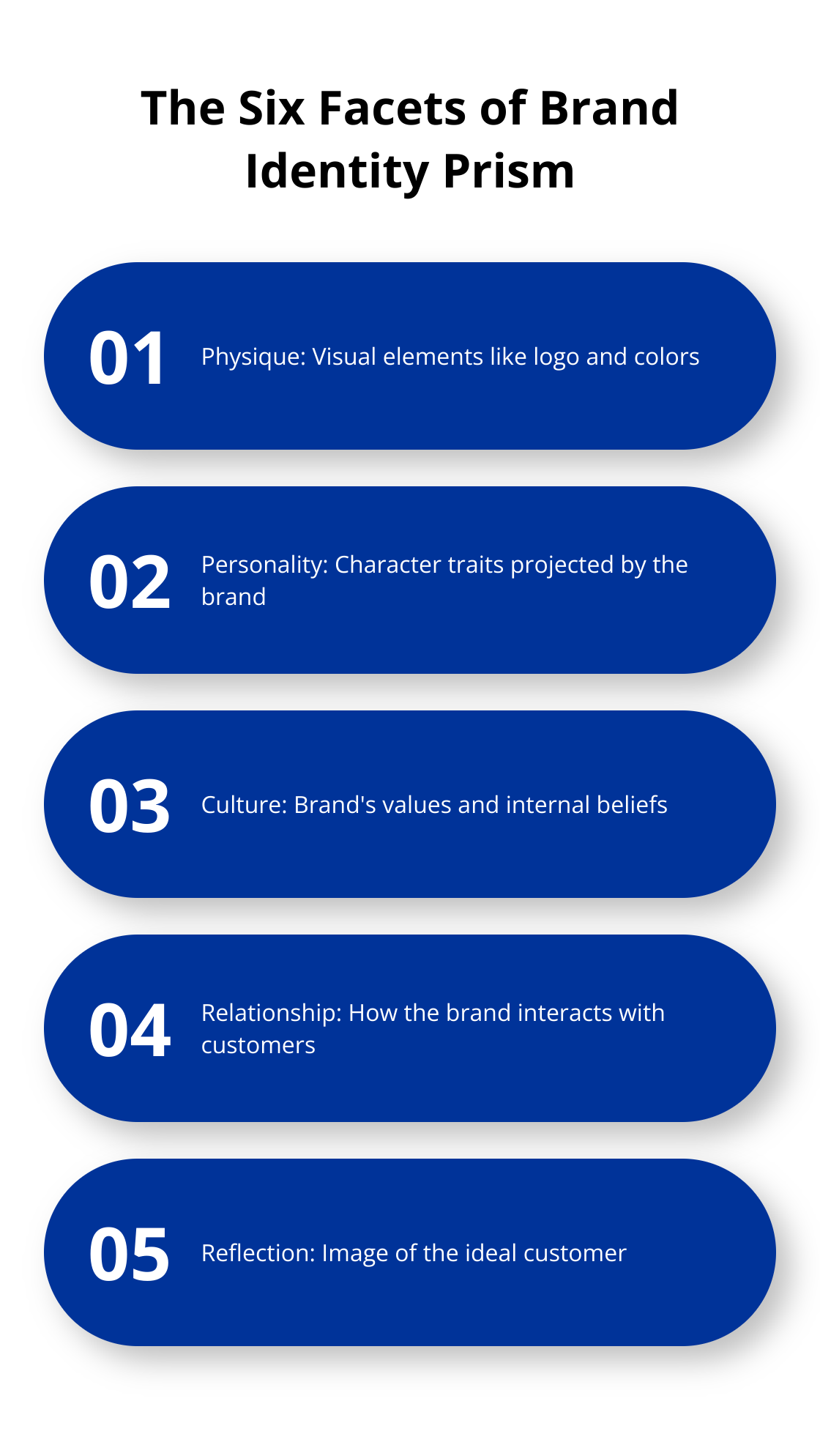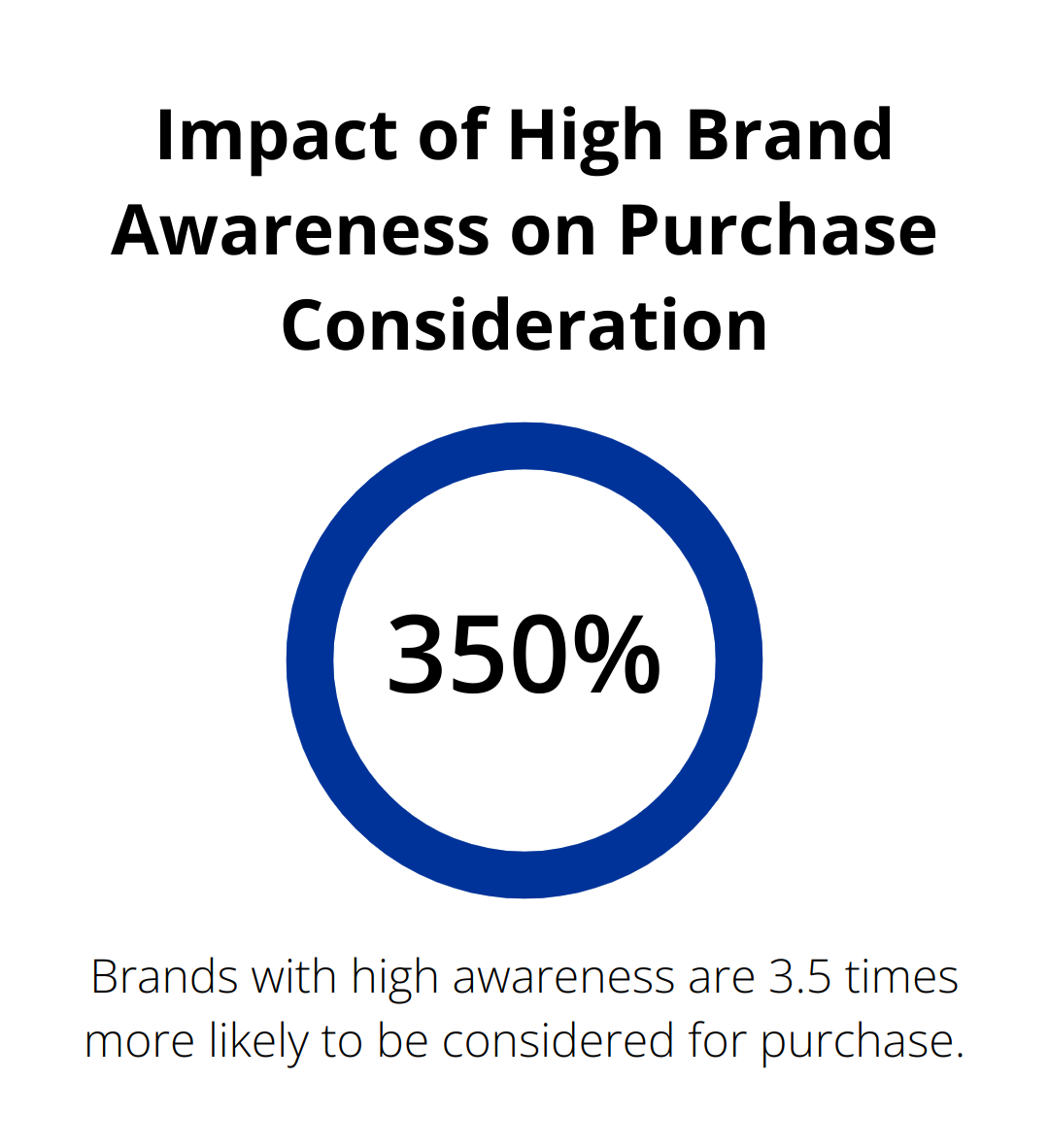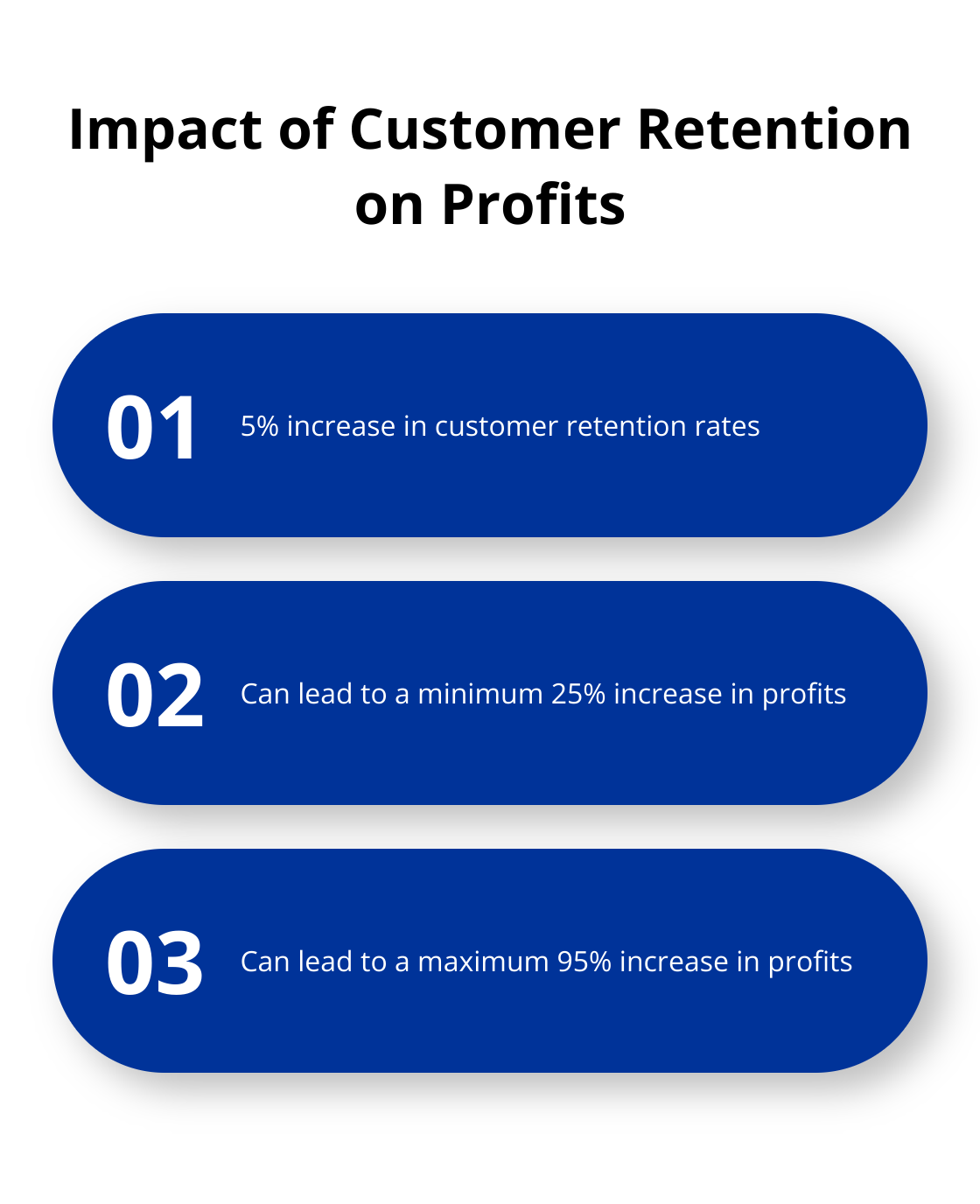At Brand Scrubbers, we know that a strong brand identity is the foundation of successful marketing. The Brand Identity Prism is a powerful tool that can help businesses enhance their core elements and create a lasting impression on customers.
In this post, we’ll explore how to use this framework to analyze and improve your brand’s identity across six key facets. Get ready to transform your brand perception and drive meaningful connections with your audience.

Implementing the Brand Identity Prism
The Brand Identity Prism serves as a powerful tool for businesses to enhance their brand’s core elements. This chapter will guide you through the process of implementing this framework effectively, helping you create a cohesive and impactful brand identity.
Analyzing Your Current Brand Identity
Before you can improve your brand identity, you must first understand where you stand. Start by evaluating each facet of the Brand Identity Prism for your current brand:
- Physique: Assess your visual elements (logo, colors, typography).
- Personality: Identify the character traits your brand currently projects.
- Culture: Examine your brand’s values and internal beliefs.
- Relationship: Evaluate how you interact with customers.
- Reflection: Determine the image of your ideal customer.
- Self-image: Consider how customers perceive themselves when using your brand.
This analysis will reveal gaps between your desired brand identity and your current one.
Developing Strategies for Each Facet
Once you’ve analyzed your current brand identity, it’s time to develop strategies to strengthen each facet:
Physique
Try to create a consistent visual language across all touchpoints. This might involve redesigning your logo, establishing a color palette, or creating brand guidelines. (Remember, consistency is key!)
Personality
Define your brand’s tone of voice and character traits. These should align with your target audience’s preferences and expectations. For example, a financial services company might adopt a trustworthy and professional personality, while a children’s toy brand might be playful and energetic.
Culture
Articulate your brand’s core values and beliefs. These should guide your business decisions and be communicated clearly to both employees and customers. (Think about how companies like Patagonia weave their environmental values into every aspect of their brand.)
Relationship
Develop strategies to foster meaningful connections with your customers. This could involve improving your customer service, creating loyalty programs, or engaging more authentically on social media platforms.
Reflection
Create marketing campaigns and content that appeal to your ideal customer. This doesn’t mean excluding other demographics, but rather focusing on the aspirational image that resonates most with your target audience.
Self-image
Consider how you want customers to feel when they use your products or services. Develop messaging and experiences that reinforce these positive self-perceptions.
Aligning Internal and External Brand Perceptions
A strong brand identity requires consistency between how your brand is perceived internally (by employees) and externally (by customers). To achieve this alignment:
- Communicate your brand identity clearly to all employees.
- Train your team to embody your brand values in their interactions with customers.
- Regularly gather feedback from both employees and customers to identify any discrepancies in brand perception.
- Make adjustments as needed to ensure a unified brand experience.
By implementing these strategies, you’ll create a more cohesive and impactful brand identity. This enhanced identity will resonate more strongly with your target audience, fostering increased loyalty and engagement. In the next chapter, we’ll explore how to measure the impact of these brand identity improvements and track your progress over time.
How to Implement the Brand Identity Prism
Conduct a Comprehensive Audit
To implement the Brand Identity Prism effectively, start with a thorough audit of your current brand identity. Analyze all six facets: physique, personality, culture, relationship, reflection, and self-image. Collect feedback from employees, customers, and stakeholders using surveys, focus groups, and social media listening tools. This comprehensive approach will provide a 360-degree view of your brand’s perception.
Develop Targeted Strategies
After identifying gaps in your brand identity, create strategies for each facet. For physique, you might redesign your logo or update your color palette. For personality, refine your brand voice across all communications. (This process often uncovers surprising insights about your brand’s current perception.)
Align Internal and External Perceptions
Consistency is key in brand identity. Your internal team must embody the brand values you project externally. This alignment might require training programs, internal communications campaigns, or even departmental restructuring. (A unified brand message can significantly boost customer trust and loyalty.)
Implement Changes Systematically
Roll out your brand identity changes in a systematic manner. Start with internal communications to ensure your team understands and embraces the new brand identity. Then, gradually introduce changes to external touchpoints, such as your website, social media profiles, and marketing materials.
Monitor and Adjust Continuously
Implementing the Brand Identity Prism is an ongoing process. Use tools like brand tracking surveys, social media sentiment analysis, and customer feedback loops to assess your brand’s performance across all six facets regularly. This continuous monitoring allows you to make data-driven adjustments to your brand strategy.
The Brand Identity Prism offers a powerful framework for enhancing your brand’s core elements. However, its true value lies in how you measure and track its impact on your business. In the next chapter, we’ll explore effective methods to quantify the success of your brand identity efforts and demonstrate their ROI.
How Effective Is Your Brand Identity
Quantifying Brand Awareness
Brand awareness measurement is essential for understanding your brand’s effectiveness. Run regular brand awareness surveys, check your social media followers, and use Google Trends data. Let brand tracking software do the heavy lifting for a more comprehensive view.
A Nielsen study revealed that brands with high awareness are 3.5 times more likely to be considered for purchase than those with low awareness. This fact highlights the importance of tracking and improving your brand’s visibility.

Assessing Brand Perception
Brand perception extends beyond mere awareness. It encompasses how people feel about your brand. Net Promoter Score (NPS) is a widely used metric for this purpose. It’s a single, easy-to-understand metric that predicts overall company growth and customer lifetime value.
Sentiment analysis provides another useful tool. This process analyzes social media posts, reviews, and other online content to gauge overall sentiment towards your brand. Tools like Hootsuite Insights or Sprout Social automate this process, offering valuable insights into brand perception.
Tracking Brand Loyalty
Brand loyalty indicates a strong brand identity. Metrics such as customer retention rate, repeat purchase rate, and customer lifetime value help assess loyalty. A Bain & Company study found that a 5% increase in customer retention rates can lead to a 25% to 95% increase in profits.

E-commerce businesses can use Google Analytics to track these metrics. Brick-and-mortar stores often have built-in analytics in their point-of-sale systems for tracking customer behavior.
Real-World Success Stories
Airbnb’s 2014 rebranding exemplifies successful brand identity implementation. They shifted focus from accommodation to emphasizing the experience of belonging anywhere. This change resulted in a 13.5% increase in bookings within a year of the rebrand.
Domino’s Pizza’s brand turnaround also stands out. By acknowledging their shortcomings and committing to improvement, their stock price soared from $8.76 in 2009 to over $370 in 2021. (This dramatic increase demonstrates the power of authentic brand identity.)
Ongoing Measurement and Adaptation
Measuring brand identity impact requires an ongoing process. Regular audits, consistent tracking, and willingness to adapt based on data are key to maintaining a strong, effective brand identity. Brand Scrubbers helps clients implement these measurement strategies, ensuring their brand identity efforts translate into tangible business results.
Final Thoughts
The Brand Identity Prism empowers businesses to create a strong, cohesive brand identity. Companies can develop a brand that resonates with their target audience by refining the six facets: physique, personality, culture, relationship, reflection, and self-image. Effective brand identity management requires constant attention and adaptation to stay relevant in a changing marketplace.
Personalization, authenticity, and purpose-driven branding will shape the future of brand identity development. Brands must adapt their identity across new platforms and technologies, including virtual and augmented reality environments. These changes will create unique challenges and opportunities for businesses to connect with their audiences in innovative ways.
Brand Scrubbers offers comprehensive services to help businesses navigate complex branding challenges. Our expertise in website design, social media management, and branding strategies can enhance your online presence and drive engagement. (We strive to implement the Brand Identity Prism effectively for our clients, ensuring their brands thrive in the digital age.)


Recent Comments